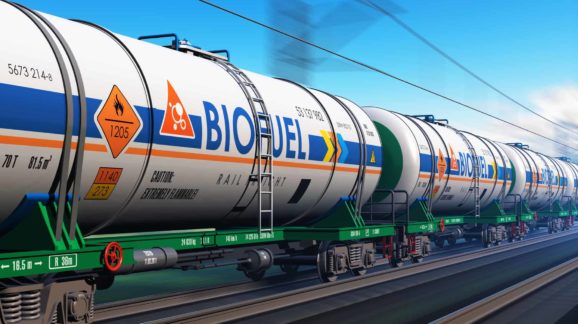Ninth Circuit Opens Pandora’s Box in Oregon Fuel Standards Case


The Ninth Circuit Court of Appeals last week upheld Oregon’s Low Carbon Fuel Standards (LCFS), dismissing a lawsuit filed by U.S. refiners, truckers, and industrial fuel consumers. Plaintiffs, collectively known as “American Fuel,” argue that the LCFS violates the U.S. Constitution’s Commerce Clause by discriminating against out-of-state fuel producers.
Although dissenting Judge N.R. Smith offered clear evidence that the Low Carbon Fuel Standard rigs the market against out-of-state producers, the court’s 2-1 decision rejected American Fuel’s claims that the Oregon program violates the Commerce Clause.
In any event, none of the judges exhibits any awareness of the mischievous precedent the Low Carbon Fuel Standard will set if allowed to stand. If Oregon may impose carbon intensity standards on imported fuels, why can’t all states impose such standards on all goods in interstate commerce?
The number of products in interstate commerce is practically limitless, and for products with multiple inputs and variable supply chains, i.e. the vast majority, estimating carbon intensities through “lifecycle analysis” is a highly subjective exercise ripe for gaming and political manipulation. The potential burden on interstate commerce is staggering and constitutionally intolerable. The Ninth Circuit has opened a Pandora’s Box.
Let’s review the basics of the Oregon program and the key arguments in the case.
Oregon Program
Oregon’s LCFS program aims to reduce the average carbon intensity of motor fuels sold in the state by 10 percent over a 10-year period. The program establishes separate annual standards for gasoline and diesel, which are assumed in the 2015 baseline year to be blended with 10 percent ethanol and 5 percent biodiesel, respectively. The chart below shows the required emission intensity reductions:

Regulated parties include all businesses that produce ethanol and biodiesel in Oregon plus all companies that import gasoline, diesel, ethanol, and biodiesel from out of state. Each party must keep the average carbon intensity of all transportation fuels it sells in Oregon within the annual limit.
A fuel with a carbon intensity below the limit generates a credit, and one with an intensity above the limit generates a deficit. Each regulated party must either generate credits greater than or equal to its deficits each year or purchase enough credits to offset any deficits it has incurred.
The carbon intensity of each fuel is determined through a “lifecycle analysis” encompassing all stages of production, transport, storage, and consumption. Carbon intensity is expressed in grams of carbon dioxide equivalents per megajoule of energy or gCO2e/MJ.
Opinion of the Court
American Fuel contends that Oregon’s Low Carbon Fuel Standard discriminates against out-of-state fuels by assigning petroleum and Midwest ethanol higher carbon intensities than Oregon biofuels. The court disagrees, contending that “the Oregon program discriminates against fuels based on lifecycle greenhouse gas emissions, not state of origin.” It notes, for example, that the program assigns “twelve out-of-state ethanols, including five Midwest ethanols, lower carbon intensities than those assigned to Oregon biofuels.”
The court does not deny that Midwest ethanol producers’ reliance on coal-based electricity and their greater transportation emissions tend to increase their carbon intensity relative to Oregon-based producers. However, that’s just how the cookie crumbles under the program’s “neutral,” “nondiscriminatory” criteria. Out-of-state producers can still compete. For example, despite larger transportation emissions, the program in 2016 assigned lower carbon intensities to renewable diesels and biofuels from Arkansas, Louisiana, Texas, South Korea, China, and Canada than to Oregon biofuels.
Judge Smith’s Dissent
Judge Smith presents clear evidence that the Low Carbon Fuel Standard is discriminatory. Although some out-of-state producers generate credits, no in-state producers generate deficits. The annual carbon intensities are set “in such a manner that all in-state fuel producers generate credits and only out-of-state fuel producers generate deficits.”
The judge elaborates:
As a practical matter, this [program] not only exempts in-state entities from any burden under the law (to remedy deficits by purchasing credits from competitors), but it also affords them an additional subsidy in the form of valuable carbon credits. By contrast, out-of-state regulated entities, including American Fuel, generate deficits and experience the full impact of the law. . . . Thus, American Fuel plausibly alleges that the Oregon program discriminates in its practical effect.
The judge could also have noted that Oregon produces no oil and has no petroleum refining facilities. Because the Oregon program assumes that gasoline and diesel have higher carbon intensities than ethanol and biodiesel, it always imposes burdens on some out-of-state producers from which all in-state firms are exempt.
Turnabout is fair play. Oregon obtains 48 percent of its utility-scale power from hydroelectric dams whereas Ohio, for example, has virtually no hydro power. Hydroelectric dams have environmental impacts. So, suppose Ohio enacts a Low Hydro Fuel Standards program. Under this system, all in-state producers would generate credits and only out-of-state companies, such as Oregon’s ethanol producers, would generate deficits. Moreover, the program would not only exempt Ohio-based entities from any burden under the law, it would also afford them an additional subsidy in the form of valuable hydro credits.
Is there any doubt Oregon’s ethanol producers would sue, claiming that Ohio’s program unconstitutionally discriminates against them and burdens interstate commerce? Is there also any doubt they would not be mollified by the argument that Ohio’s program is “neutral” and “nondiscriminatory” because the Low Hydro Fuel Standards apply equally to in-state and out-of-state producers?
Absurd Results
Alas, none of the judges seems aware of the Pandora’s box they have opened. Life cycle analysis can be applied to any product or service. Moreover, if Oregon can get away with this, so can any other state.
Measuring carbon intensities is tricky and easily gamed for competitive advantage. OR-GREET, the model Oregon uses to calculate motor fuel carbon intensities, considers “emissions from the growth of inputs into the production of fuels, such as corn; efficiency of production, including electricity or fuel used for energy; milling processes; conversion of land for production; and transportation of fuels and feedstock,” the court notes.
All ethanol is chemically indistinguishable. Yet OR-GREET produces widely differing carbon intensity scores for different batches of ethanol depending on local climate, agricultural practices, feedstocks, energy sources, delivery routes, etc. Imagine the administrative morass facing U.S. businesses if states begin setting carbon intensity standards for products composed of numerous and diverse components, assembled through numerous, diverse, and continually changing supply chains.
A regime of multiple (possibly 50) separate and continually updated carbon intensity schedules for thousands of products would massively “burden the interstate flow of articles of commerce.” Any such regime would be constitutionally intolerable. How then can the first steps toward it be constitutional?